It is not all about weapons and armour.
Alright, I know a few of you are reeling in shock, but honestly, the recreation of the past doesn’t actually require weapons and armour at all, and fascinating as some of us may find martial arts, tactics and strategies and the material culture of conflict, really, there’s so much more. People lived, loved, ran races, lounged on couches, and wore clothing and jewelry and ate food.
Lived, as I said.
I happen to have the pleasure of knowing a great many craftspeople. Rather like the blog I wrote about Hannah Lowe and people who train and practice hard, craftspeople are often very different. They have very rugged and sometimes stubborn personalities. They can focus–incredibly–for long stretches without boredom. I know a few craftspeople, and I suspect J.R.R. Tolkien did too… the dwarves may represent a stereotype, but it is also an archetype.
I know Erv Tschanz, who I think of as one of the most gifted all-around craftsmen I’ve ever met (one of my mentors) who has built rifles and knives and such, but whose specialty is horn work. You know–cow horn? The plastic of the pre-modern era? You can carve horn, but you can also, to some extent, mold it, and people made air-tight boxes and powder horns and drinking horns and almost-clear horn panes for lanterns and any number of other things. Horn can be quite beautiful, too.
But, as usual, I digress. I know quite a few armourers (and both Jiri Klepac and Jeffrey Hildebrandt have graced these pages), and a dozen rifle-makers who recreate 17th to 19th century black powder rifles. I know quite a few superb amateur (and professional) tailors, and a marvelous tinsmith (Carl Giordano) and a marvelous copper smith and some amazing blacksmiths, including Jymm Hoffman, who I’ve known since we were pretty young. Or so it seems to me. And leather workers–I know great leather workers on three continents. My current favorite is Davide Giurissini in Italy… and there are some amazing craftsmen in Italy. And really — only looking at their websites in depth can do justice to the superb stuff these people can make. The skills of the past are not lost. They are very much alive.
But today’s focus is on my friend Aurora Simmons, who despite her age can perhaps rival Erv Tschanz for her all-around skills. She’s a trained jeweler and goldsmith, but her skills include embroidery, leather work, sewing, weaving, and a general willingness to try almost any craft-related task from gilding to mosaics.
Aurora’s specialty is the recreation of period metalwork. This last week, she’s been in my shop finishing a knight’s belt for my friend Marc Auger…

A knight needs a belt. The very term ‘a belted knight’ is probably a holdover from the habit of Roman soldiers that by wearing a belt studded with metal they marked their military status. Medieval knights called themselves ‘Miles’ and probably imagined that they were ‘modern’ legionaries.
I think I’ve slipped into digression again. One of the greatest difficulties in recreating culture–especially high culture–in any era is the sheer diversity of hand-made, tailored or custom-produced items that were used to mark status. It is extremely difficult for reenactors to make ‘bling’ and have it look correct. In some cases, the materials themselves are no long available (furs and ivory) and in some cases, the very factors that made them status markers in the fourteenth century make them prohibitively expensive today… like gold. But a third factor is the simple cheapness of historical hand labour.
I can remember standing in a small shop in Bath, in the UK, and looking at a mid-18th century handkerchief. This small square of linen had a superb provenance–we knew exactly who had owned it. It was made of a square of superbly woven, very light linen with no flaws. The seamstress who made it pulled threads from the edges; then cut narrow (3mm) tapes of linen and stitched them up the back, pressed them flat with an iron, and re-wove the tapes into the pulled thread work. I am a fairly expert sewer. I frankly can’t imagine the work–the sheer work–and expertise involved.
By the way — that handkerchief did not belong to a duke or a duchess or a king or even a knight. It belonged to a banker’s clerk.
Expert labour was cheap.
Understanding this is at the root of what I call ‘reenactor despair’ where you finally realize that you may never, ever be able to make even a simple garment as well as a person who lived in 1350 or 1750 or 550 BCE. They had a lifetime to master skills that we try to reproduce in an afternoon. They didn’t just have sword smiths. They had a blade smith, a white smith (you all know the difference between a black smith and a white smith, right?) for finishing, a hilter who built the hilt, and quite possibly a jeweler to work the gold and silver and make the wire. When modern reproducers work to make the crafts of the past, they often have to duplicate the work of three or four experts. This defeats most of us.
Not Aurora Simmons. She seems to master all the skills.
Back to Marc’s belt. Knights wore belts–belts that became increasingly elaborate and may, in fact, have been influenced by Greek, Serbian, and possibly Mongol styles. I’ll take this moment to recommend a really well-researched book on late fourteenth century material culture and the effect of luxury and fashion on banking and, well, everything, by Susan Mosher Stuard…
Anyway… Some months ago, we all fell in love with the ‘Saint Graal’ manuscripts. You can find the online digital version here. The original was painted and penned in about 1380, in northern Italy or France. It’s like an upper-class costume bible.
After searching through a number of sources, the best of which is probably the wonderful ‘Dress Accessories c. 1150-1450’ from the series ‘medieval Finds from excavations in London’…
Aurora then began to deign the belt fittings, basing hers on originals–but incorporating Marc’s coat of arms and the details of his heraldry, as would have been done. Then she carved the pieces in wax, cast them into brass, and finished them.
Then, piece by piece, she riveted them to a leather belt she made, exactly as would have been done by a Medieval belt maker, using a decorative outer piece of deerskin to contrast the belt fittings.
And then, when everything was sewn and riveted, she closed the back, and there it is. A mere forty or so hours of work.
Oh, by the way, a belt like this costs about $800.00 CAD and Aurora would be happy to make you one.
Or almost anything else you can think of–Ancient Greek, Medieval, Renaissance or Modern.
Aurora can speak for herself on her background:
I starting seriously making things in high school at age 16. A friend taught me the basics of chainmail and I was hooked. I spent many long nights maintaining my tenuous hold on sanity staying up until 2, watching Firefly and making chainmail. Bras, shirts, bracelets, you name it. I learned new weaves with an insane hunger. I worked with titanium, silver, stainless,
anodized aluminum. There was so much creativity available in terms of colour and variety. I was fortunate enough to go to an alternative school that allowed me to make chainmail in class, which was great because it really helped me concentrate.

Then I got into sewing. I would buy patterns from Fabric land and blast my way through them. Slowly teaching myself to tailor. But I have to say I wasted some expensive materials learning the hard way.
When it came time for post secondary education, I bucked my mothers wishes and went to George Brown for jewelry arts, instead of one of the universities I had gotten into. It was a great, highly technical program, only sullied by long power point lectures that I mostly ignored, and occasional program politics which I also largely ignored.
I loved silver-smithing the most. Moving large amounts of metal into sculptural forms was incredibly satisfying, and gave me the foundation that I was later to use for my forays into bronze and brass armoring. I also loved chasing and repoussé, something I don’t get to do much of now, since it’s generally too labor intensive for people to pay for, not unlike embroidery.
I love making pretty much anything I put my hand to. I love sewing and making clothes as well as working with metal, but I loved making furniture and wood working too, back when I got to play with that stuff in high school.

Crafting always helps me feel saner, except when it makes me want to break things. There is something so uncompromising about working with the physical world. If something is crappy, it’s obvious. Everyone can tell.
Sometimes you can fix it, sometimes you have to start from scratch and you have lost hours of work, and maybe hundreds of dollars of materials. There is no negotiating with a broken gemstone or a wedding deadline. I love the challenge. I love tackling new, bizarre projects. It gives me a real thrill. I guess it’s partly the risk of serious failure that’s exciting. But also, finding success on a project that is really and truly challenging
is incredibly rewarding.
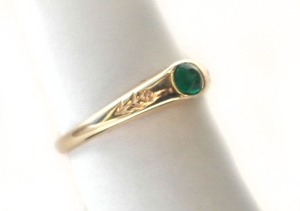
Making things that people love is also a big part if it for me. Knowing that someone is going to wear something I made every day, usually in the case of rings, is very encouraging. I guess there’s a feeling that I will live on in some small way, especially with jewelry, because it’s so lasting. I know when I make someone something valuable, there is a high chance that there children and grandchildren will have it, or they might even want to be buried with it, which is special in a different way. Maybe
that’s a little morbid, but I love the idea of existing through the ages, incorruptible, silver and gold. even if my name is lost, my work will still exist. A little part of me.
Crafts people are often forgotten. Our names are not remembered in the same way that a fine artist might be. But the work is there no matter what. All the artisans who worked on a Byzantine mosaic names may be lost, but their work is a living testament to their fierce commitment to their craft, maybe
to their god. Their reality is tangible, even centuries later.
I don’t get there mostly. I think I make usually about 4 or 5 things a year that I really feel that way about. Where I look at it and it warms me to know I made it.

But those times are good, they make a lot of the wasted time and lost money worthwhile. But I couldn’t stop even if I wanted to. Few things are better than making something. I consider myself a complete addict. I spend all my extra money on craft supplies. I loose sleep, and cause myself physical pain. I spend time doing it that should be spent doing other things.
Aurora can make almost anything, and you can see more of her work at her ‘Handmade Revolution‘ website.
And in closing… for those of us who are writers, or readers, let’s remember how important crafts and craftspeople were to the world of the past. People had to make–everything, but they were not ‘barbarians’ and they had remarkable levels of expertise. Beautiful objects–the very best–were traded so widely as to move from the far east to the uttermost west. And the people who could make such things had status. And character.
I’m finishing Tom Swan 13 this week, and then I’ll be back to writing Red Knight IV, ‘Plague of Swords.’

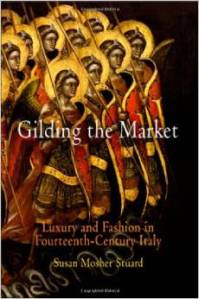


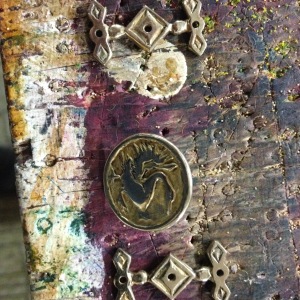





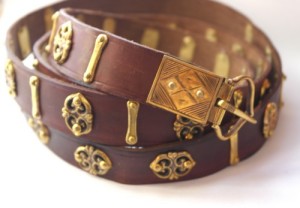
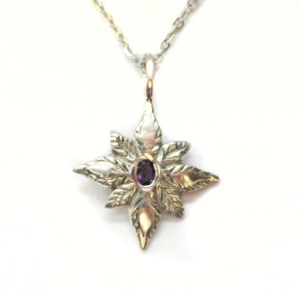
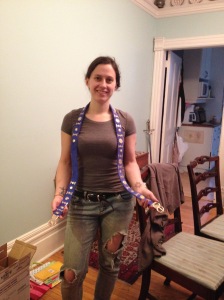

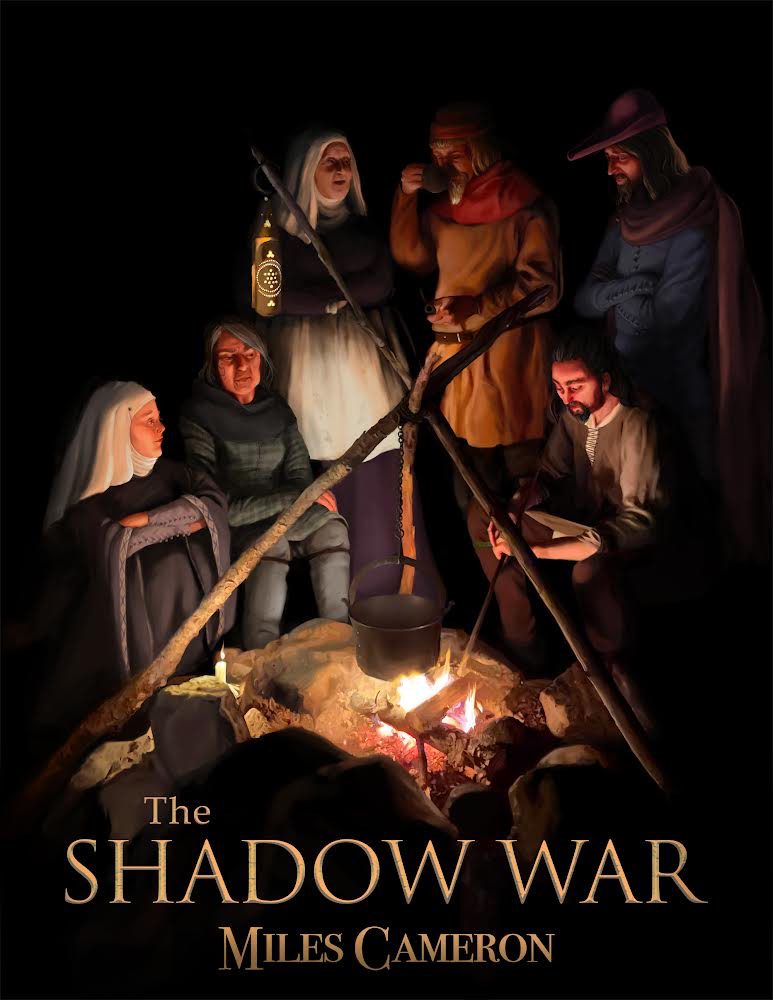
She does make beautiful things. We have several jewels of her. And she really is a jack of all trades. She even made my own custom bronze `eastern saka’ trilobal arrowheads! I am very pleased with such craftspeople.
Thanks for this great article.
As the season for all those medieval markets and fairs begins over here, I will make sure to appreciate the craftsmen when I visit them. (I always do, but most people go there and wait impatiently for the tournament to take place, ready to watch some jousting -me included, not gonna lie). But while some of those craftspeople are there just for fun, and some stuff (and clothes people wear at those things) look like something bought in a carnival shop, others take it very seriously and they know EVERYTHING about their craft. When you walk past them and even look mildly interested in what they’re doing, they will almost jump at you out of excitement, ready to tell you all about it. 😉 It is really sweet. When you talk to them, you’ll notice that they talk like Miss Simmons -full of passion and love for their work. I once talked to someone who does nothing but handmade brushes and brooms the way they were made in the Middle Ages. Granted brushes and brooms – even handmade ones- aren’t as exciting or pretty as the stuff Miss Simmons makes, but he was so enthusiastic. He could tell me everything about when which kind of hair was used and why. And even his children could chime in on the conversation (and they were maybe like 9 – 11 years old). I had a similar experience with a married couple that sews medieval clothing. And all of them told me how they don’t do this for profit, but because they love doing it.
Anyway, I agree, it is amazing what people could do. I find it astounding that people had that level of expertise. And they didn’t have an iPad next to them to look things up, so all this information was in their head. I used to have the theory that one of the main reason people had that kind of expertise is because crafts in the past were more specific (like that brooms and brushes man who told me that “broom maker” was a recognized profession up until 1990). But seeing as people like Miss Simmons do several things and are good at them, I guess I’m wrong.
Can’t wait for more Tom Swan and more on Red Knight III (and IV)!
Reblogged this on parmenionbooks and commented:
Aurora is wonderful, I have several pieces she has made. It’s wonderful to have unique hand made things in this cardboard cutout age.